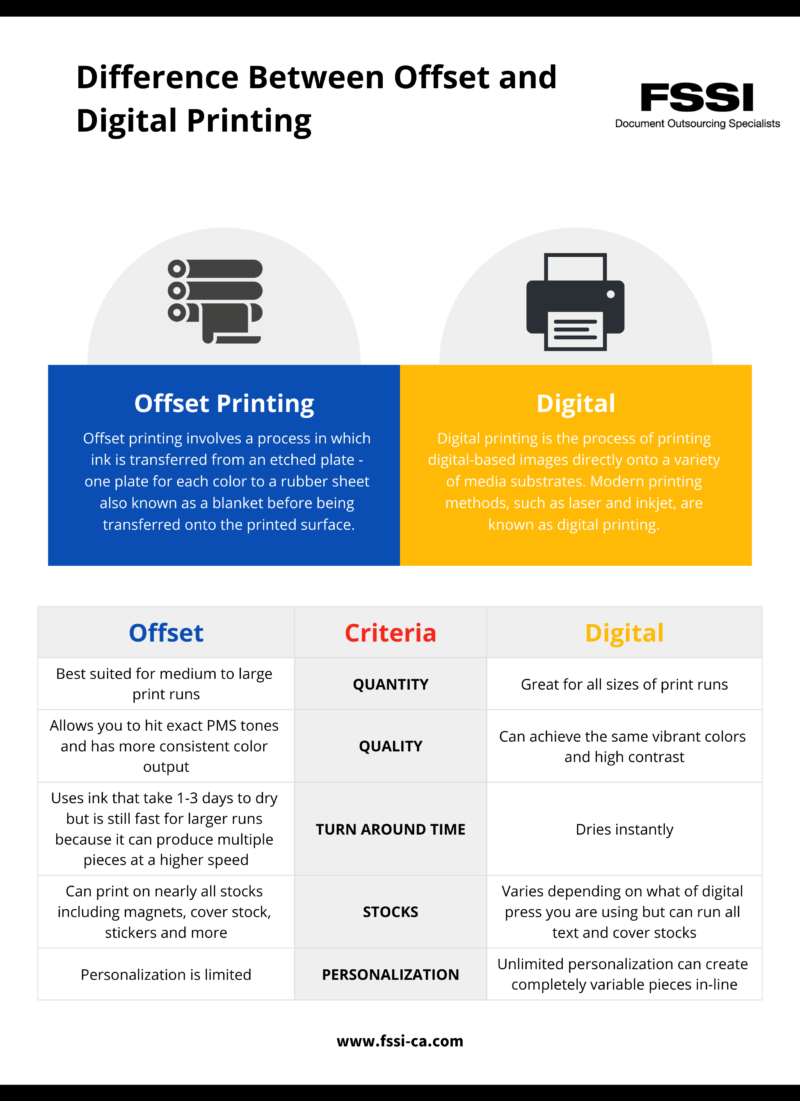Introduction
When it comes to printing, there are two main technologies that have revolutionized the industry: digital printing and offset printing. Both methods offer unique advantages and cater to different printing needs. In this blog post, we will explore the differences between digital and offset printing, helping you determine which advanced technology suits your specific requirements.
1. Cost
One of the primary factors to consider when choosing between digital and offset printing is the cost. Digital printing is generally more cost-effective for small print runs, as it eliminates the need for expensive setup costs associated with offset printing. On the other hand, offset printing becomes more economical for larger print quantities, as the setup costs can be distributed over a larger number of prints.
2. Quality
When it comes to print quality, offset printing has long been considered the gold standard. It offers superior color accuracy, sharpness, and consistency, making it ideal for projects that require high-quality prints, such as brochures, catalogs, and magazines. Digital printing has come a long way in terms of quality, but it may not match the level of detail and precision that offset printing can achieve.
3. Turnaround Time
If you have tight deadlines and need your prints quickly, digital printing is the way to go. Digital printers do not require any setup time, allowing for faster turnaround times compared to offset printing. With offset printing, the setup process can be time-consuming, especially for complex projects. However, once the setup is complete, offset printing can produce prints at a much faster rate than digital printing.
4. Customization

If you require personalized prints or variable data printing, digital printing is the clear winner. Digital printers can easily handle variable data, allowing you to customize each print with unique information, such as names, addresses, or images. Offset printing, on the other hand, is not well-suited for customization and is better suited for static prints that require consistent colors and designs.
5. Color Options
Offset printing offers a wider range of color options compared to digital printing. With offset printing, you can use Pantone colors and achieve precise.
Summary
Printing has come a long way, and with the advent of digital and offset printing, businesses and individuals now have more options than ever before. Digital printing involves transferring digital files directly onto various printing surfaces, while offset printing utilizes plates and ink to transfer images onto paper or other materials. The choice between these two technologies depends on factors such as budget, quantity, turnaround time, and desired print quality.
In this blog post, we will delve into the pros and cons of digital and offset printing. We will discuss the cost-effectiveness, flexibility, and speed of digital printing, as well as the superior image quality, color accuracy, and cost efficiency of offset printing. By understanding the strengths and limitations of each method, you will be able to make an informed decision that aligns with your printing needs.
Whether you are a business owner looking to print marketing materials, a graphic designer working on a client project, or an individual seeking high-quality print why not try this out s for personal use, this blog post will provide valuable insights to help you choose the right printing technology for your specific requirements.
- Q: What is digital printing?
- A: Digital printing is a method of printing directly from a digital file to a variety of media, such as paper, without the need for traditional printing plates.
- Q: What is offset printing?
- A: Offset printing is a traditional printing method that involves transferring ink from a plate to a rubber blanket, which then rolls the ink onto the printing surface.
- Q: What are the advantages of digital printing?
- A: Digital printing offers quick turnaround times, cost-effectiveness for small print runs, variable data printing capabilities, and the ability to easily make changes to the design.
- Q: What are the advantages of offset printing?
- A: Offset printing provides high image quality, consistent color reproduction, and is more cost-effective for large print runs.
- Q: Which printing method is more suitable for small print runs?
- A: Digital printing is more suitable for small print runs due to its cost-effectiveness and ability to print variable data.
- Q: Which printing method is more suitable for large print runs?
- A: Offset printing is more suitable for large print runs as it offers cost advantages and consistent high-quality results.
- Q: Can digital printing accommodate last-minute changes to the design?
- A: Yes, digital printing allows for easy and quick changes to the design, making it ideal for projects that require frequent updates or customization.
- Q: Does offset printing provide better color accuracy?
- A: Yes, offset printing provides better color accuracy and consistency compared to digital printing.
- Q: Which printing method is generally more cost-effective?
- A: The cost-effectiveness of a printing method depends on the specific requirements of the project. Digital printing is more cost-effective for small print runs, while offset printing becomes more economical for larger quantities.

Welcome to my website! My name is Mason Ringrose, and I am a passionate and dedicated professional Print Management Software Developer. With a strong background in advanced printing technologies, 3D printing innovations, and sustainable printing, I am excited to share my knowledge and expertise with you.

